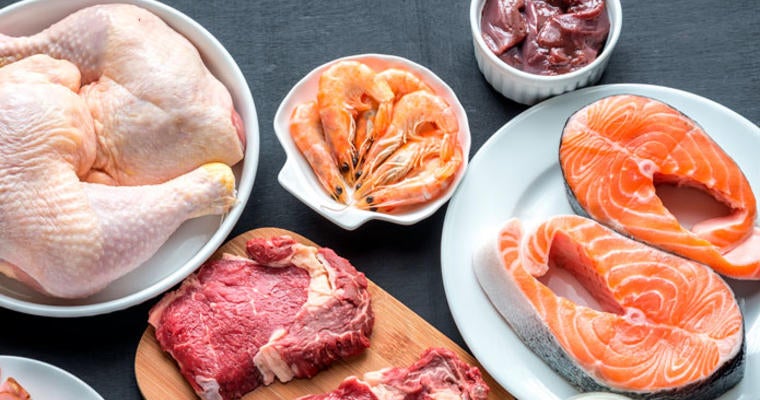Learn what it takes to keep animal proteins out of the temperature danger zone.
Most of us would agree our meals center around the protein on our plates. Because meal choices are often driven by the protein we want, it’s easy to understand why this center of the plate superstar is so important. Equally important for anyone dealing with poultry, meat or fish is to know that these proteins require specific food-safety measures.
Why you need to be vigilant when preparing meat, fish and poultry
Meat, fish and poultry need extra care because they contain protein, are moist and have a neutral or slightly acidic pH. These three factors can create the perfect environment for harmful microorganisms or toxins to rapidly reproduce at temperatures of 4°C to 60°C. So meat, fish and poultry, must be kept below 4°C or above 60°C.
How to prevent meat-, fish- and poultry-related food hazards
From delivery to holding and everything in between, here’s how you can prevent food hazards when it comes to meat, fish and poultry.
Delivery. It’s important to check the temperature of any animal protein item at delivery. Most items should be below 4°C. Also, check for evidence of thawing and refreezing, as temporary increases in temperature can compromise the safety of the item. Ice crystals are a common indicator.
Storage. Refrigerate items below 4°C and freeze them below -18°C. Place them in this order:
- Seafood or fish: 4th shelf from the bottom
- Whole cuts of beef: 3rd shelf from the bottom
- Whole cuts of pork, bacon or sausage: 2nd shelf from the bottom
- Ground meat: 1st shelf from the bottom
- Whole or ground poultry: Bottom shelf
Prep. Use separate cutting boards and knives when preparing meat, fish or poultry to avoid any cross-contamination.
Cooking. Before serving, check to make sure every piece of meat, fish or poultry has met the minimum internal cooking temp, leaving the meat thermometer in for the required time.
Holding. Remember the danger zone of 4°C to 60°C we talked about earlier? Those are the temps you want to remember for holding food. Cold items should be kept at or below 4°C (40°F) and hot foods need to be kept at or above 60°C .
Have more questions?
Contact our Nutrition Resource Center by calling 1-866-814-1272 or emailing nutritionrc@gfs.com.










